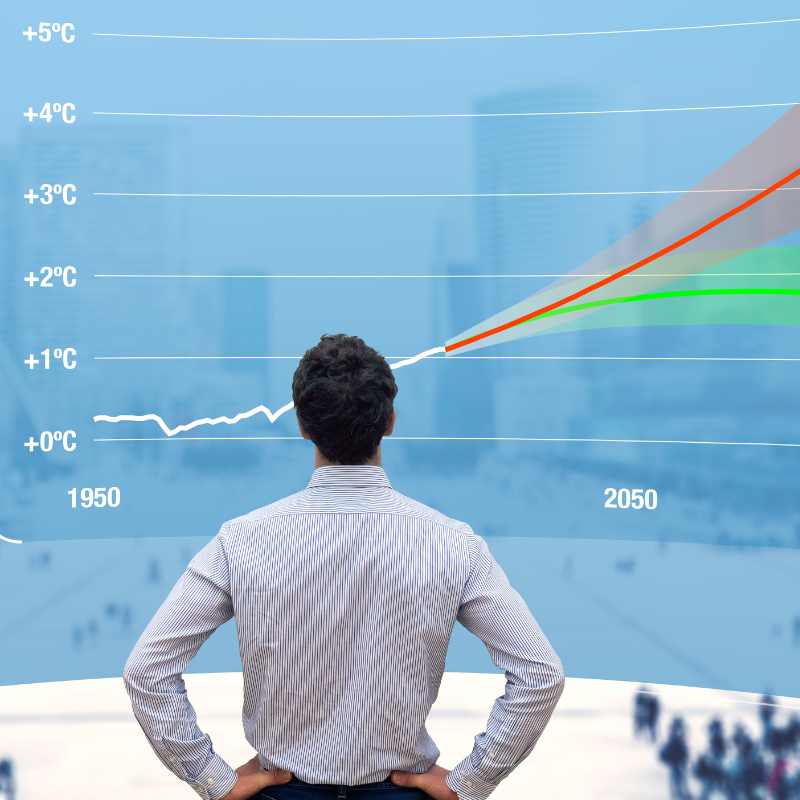The European Union (EU) introduced the Taxonomy Regulation in July 2020, which sets out an EU Framework for sustainable investment. The regulation provides common definitions and criteria for what constitutes a sustainable economic activity. One of the key goals of the regulation is to incentivize businesses to reduce energy consumption and energy pollution.
As the European Union continues to develop its policies around energy efficiency, more and more businesses are looking for ways to reduce their energy consumption. There are several ways that new commercial construction activities can reduce energy consumption, including improving ventilation, using more efficient lighting and electrical equipment, and installing energy-efficient heating and water systems.
Ventilation:
One area that has received attention in recent years is ventilation. In buildings, ventilation is typically used to control indoor air quality by bringing in fresh air and removing pollutants. However, it can also be a significant source of energy consumption, particularly in commercial buildings.
EU taxonomy-compliant new construction activities may help to reduce energy consumption for ventilation. The taxonomy requirements for volatile organic compounds (VOCs) and formaldehyde imply that the building may be normatively categorized as “low-pollutant” or even “very low-pollutant.” As a result, air exchange rates may be reduced compared to non-low-pollutant buildings. This could lead to significant energy savings, as well as reduced emissions of greenhouse gases and other pollutants. In addition, EU taxonomy-compliant buildings are also required to meet strict energy performance standards. As a result, they are often more energy efficient overall, which can further help to reduce energy consumption for ventilation.
Electricity:
It’s no secret that electricity consumption has become a problem in recent years. As our population density increases and more people turn to electricity as their primary source of power, the strain on the world’s power grids has become increasingly apparent. In fact, electricity pollution has become one of the leading causes of climate change.
New buildings are often designed with energy efficiency in mind. In many cases, this means that they can reduce electricity consumption compared to older buildings. This can have several benefits, both for the environment and for electricity bills. For one thing, reducing electricity consumption can help to reduce pollution from power plants. This is because fewer electricity needs to be generated, which results in lower emissions. In addition, using less electricity can help to ease demand on the power grid, which can lead to reduced blackouts and brownouts. As a result, new buildings can play an important role in reducing electricity consumption and pollution.
The guidelines published by the European Commission on the taxonomy of sustainable investments have identified electricity consumption in new buildings as a key area for improvement. The taxonomy, which is designed to help investors identify environmentally sustainable projects, provides a framework for assessing the electricity consumption of new buildings against a set of principles. Among other things, the electricity consumption of a building should be monitored and reported on a regular basis, and steps should be taken to reduce electricity consumption where possible. In addition, the electricity used by a building should come from renewable sources, and the pollution caused by electricity generation should be minimized. By following these guidelines, new buildings can make a significant contribution to reducing electricity consumption and pollution.
Water consumption:
The EU-Taxonomy has water saving guidelines for new buildings. The guidelines focus on water consumption in new buildings and provide clear definitions and criteria for water efficiency. As water becomes increasingly scarce, it is essential to take measures to reduce water waste.
Water is essential for life, but humans tend to waste it. In developed countries, water wasting is often due to outdated or inefficient plumbing fixtures. In the US, for example, it is estimated that showers account for 17% of all residential water usage. This adds up to billions of gallons of water wasted every day! Switching to water-efficient showerheads and faucets can help reduce water waste and save money on water bills. Furthermore, drinking water is another area where we can make a difference. In the EU, it is estimated that 30% of all drinking water is wasted. This equates to billions of liters of water going down the drain every day! Installing water filters and investing in reusable water bottles can help reduce this wastage.
One of the key recommendations under the EU-Taxonomy is to use greywater systems. Greywater is wastewater that has been used for activities such as washing dishes or laundry. Greywater systems recycle this wastewater and use it for other purposes, such as flushing toilets or watering plants. This can help reduce water consumption by up to 30%.
Another recommendation under the EU-Taxonomy is to use water efficient fixtures and appliances. Water efficient fixtures and appliances are designed to use less water than traditional fixtures and appliances. This includes low-flow toilets, showerheads, and faucets. By using water efficient fixtures and appliances, you can save thousands of gallons of water each year.
Conclusion:
Europe is leading the way in promoting energy efficiency with its new taxonomy guidelines. By helping investors identify opportunities for positive impact, these guidelines will support the development of sustainable infrastructure and promote responsible use of energy sources. The energy taxonomy provides a common language for energy projects that will lead to lower energy consumption, decreased energy pollution, and less energy wasted. This is a significant step in addressing climate change and promoting sustainable development. With clear guidelines in place, investors can make informed decisions about where to allocate their resources. This will ensure that Europe remains at the forefront of the fight against climate change and sets a strong example for other regions to follow.






